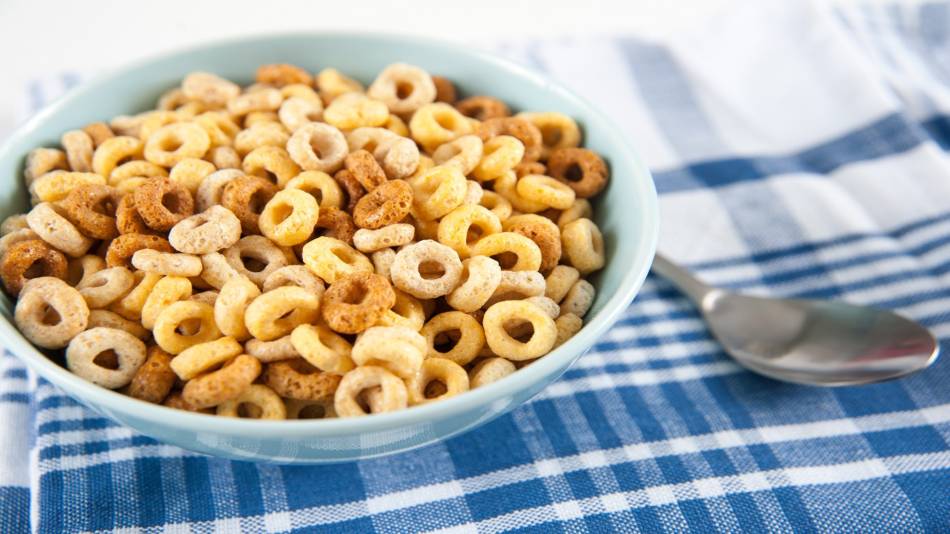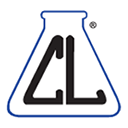
Answer:
What's glyphosate?
Glyphosate is the synthetic chemical in RoundUp herbicide, designed to kill weeds around plants that have been genetically altered to withstand it, such as genetically modified (GMO) soybeans and corn. It is also sprayed on many types of conventional crops such as wheat, oats, and barley prior to harvest as a drying agent and to even-out maturity. A USDA study published in 2014 found that it was also commonly used on cherries, avocados, apples, lemons, grapefruit, peanuts, and pecans (USDA 2014). Glyphosate is also found in processed foods containing these ingredients and cannot be removed by washing, cooking, or baking. It can remain stable in food for a year or more.
Is glyphosate safe?
According to the U.S. EPA, glyphosate has a low toxicity for people and is not likely to be carcinogenic in humans. It has established tolerance limits for the concentration of glyphosate permitted in a wide range of human and animal food crops, including corn, soybean, oil seeds, grains, and some fruits and vegetables, ranging from 0.1 to 400 parts per million (ppm), equivalent to 100 to 400,000 ppb. For oats, for example, the limit is 30 ppm or 30,000 ppb. The EPA has noted that pets may be at risk of digestive or intestinal problems if they touch or eat plants that have just been sprayed.
California applies stricter limits for glyphosate in foods. Products that contain more than 1,100 micrograms (mcg) of the herbicide glyphosate per daily serving are required to have a warning label if sold in California. The label warns that the product contains a chemical known to cause cancer and birth defects or other reproductive harm. This level of exposure is estimated to pose a 1 in 100,000 lifetime risk of cancer, as determined by the International Agency for Research on Cancer part of the World Health Organization. However, as discussed below, it seems unlikely that any food product will exceed this limit.
Similar to the U.S. EPA, the European Food Safety Authority concluded that glyphosate is unlikely to pose a carcinogenic hazard (and that it does not have endocrine disrupting properties) but set a maximum acceptable daily intake limit based on reproductive toxicity shown in animal studies. The limit in Europe is currently set at 0.5 milligrams (or 500 mcg) of glyphosate daily per kilogram of body weight, which works out to about 34 milligrams, or 34,000 mcg, for a 150-lb. person.
Laboratory studies have shown that glyphosate can affect some bacteria that occur in the digestive system because it blocks a biochemical pathway for aromatic amino acid synthesis (the Shikimate pathway) that occurs in some bacteria (as well as in plants, but not in animals). However, short-term in vivo experiments in rats given high doses of glyphosate (equivalent to 50 times the European limit based on body weight) have only shown very limited effects, presumably because of the abundance of amino acids in the gut that alleviate this biochemical effect (Nielsen, Environ Pollution 2018).
The risk of autism has been shown to be higher among children born to pregnant women who live within one mile of agricultural areas where pesticides are sprayed than in areas where they are not sprayed, and this risk was highest with glyphosate relative to other chemicals (von Ehrenstein, BMJ 2019). As a widely used herbicide, there are also concerns about the direct and indirect impacts of glyphosate on non-agricultural plant and animal life, including a decline in monarch butterfly populations due to loss of milkweed, a food source, in and around agricultural areas (Friends of the Earth, 2013).
How much glyphosate is in foods?
Sign in as a member to see how much glyphosate has been found in oat-based foods and chocolates, including brands such as Cheerios, Bob's Red Mill Organic, Nature's Path, Simple Truth, Quaker and Whole Foods, as well as amounts found in oat milks, and chocolate bars from Godiva, Hershey’s, MrBeast and Theo.
The bottom line: Glyphosate safe or unsafe?
Glyphosate is known to cause reproductive toxicity based on animal models, and it may possibly be a carcinogen -- although there is dispute about this. Due to its widespread use as an herbicide, it is found in many foods. However, at standard serving sizes (and even several times those sizes) even foods with the highest known concentrations of glyphosate, such as conventionally grown oats, appear to contain amounts of glyphosate far below those that pose a safety risk or require any type of warning. If you are concerned, glyphosate can be largely avoided by choosing organically grown foods. Be aware that "organic" processed foods, such as cereals, may still contain a very small amount of glyphosate, likely due to cross-contamination of ingredients.
When evaluating reports on glyphosate, it is important to distinguish between the concentration in a product, typically in ppb (1,000 ppb = 1 mcg per gram), and how much you would consume, i.e., the concentration times the grams in a serving.
Also see ConsumerLab.com's Oat Cereals Review, which compares amounts of ochratoxin A (a potential carcinogen and kidney toxin) and gluten in popular products and discusses possible levels of chlormequat (a plant growth regulator) in certain oat products. Glyphosate was not tested in the Review, which was conducted prior to the classification of glyphosate as a probable carcinogen in the U.S., but levels would likely be similar to those reported above.
Join today to unlock all member benefits including full access to all CL Answers and over 1,400 reviews.
Join NowAlready a member? Sign In Here.
Join now at www.consumerlab.com/join/








shortydoc50
April 06, 2020can you comment on glyphosate in pet food? I have read of studies where cats and dogs nay be exposed to 12 times what humans are based on levels of GP in their urine. Grain-free kibble is supposed to be the worst and raw foods the best in this regard according to same source.
Reply to this post…
Jeanette17
February 16, 2020I have discovered that if I eat conventional pasta, say at a restaurant, I'm in gastric distress - feel like the food is just sitting uncomfortably in my stomach - for hours. I have no difficulty with organic pasta.
Reply to this post…
Theresa9678
June 16, 2019It seems though this level could be considered safe for adults it may not be safe for small children (I assume the primary consumers). Could you please include calculation for them?
Reply to this post…
JoDell9674
August 20, 2018I actually spoke with the on-staff veterinarian at Monsanto after my cat, and a friends dog (on the other side of town) both had bloody vomiting and bloody diarrhea with the only thing in common was that our husbands had sprayed roundup in the yard two days prior. Monsanto Vet told me no matter how long ago it has been sprayed the grass that it was sprayed on is NEVER safe to ingest by dogs, cats, cattle, horses, goats, etc.... Roundup is toxic and if my husband wants to remove weeds, grass or anything else, he now uses a propane torch to burn them. FYI - both the cat and dog died from cancer within 24 months. Yet people just keep on using it :(
Reply to this post…
Gigi9671
August 20, 2018It would be helpful to know the effects to human health when exposed to smaller levels of this toxin over time. I don't think enough is being said about this lack of data. Therefore, down-playing the unlikely event someone would consume the limit of 1,100 mcg may be giving people a false sense of security that this toxin is not harmful, when in fact it might be.
vicki9673
August 28, 2018The effects of a toxin tend to be different when exposure is acute (large dose over a short term) vs. chronic low level exposure which for humans can span decades. There is a lot of research on acute exposure trying to prove that glyphosate in our foods is safe, but very little has been done looking at the effects of exposure over a lifetime. The current increase in chronic metabolic issues such as obesity, diabetes, and autoimmune disorders suggests that this is a field of study that really should be pursued.
Margaret9672
March 28, 2021Yes this!
Reply to this post…
leeann9664
August 20, 2018Please be sure, when you mention choosing organic over conventional produce-that there are also organic pesticides. But the most important point is that, regardless of what has been used, none rise to the level of concern. The benefit of consuming fruits/vegetable/grains far outweighs the risk of danger from pesticides. Buy organic bc you like it (flavor, the way it's produced), not bc you fear danger from conventionally produced foods.
I am a registered dietitian concerned w people not getting the nutrients they need bc they believe conventionally grown foods are dangerous but cannot afford organic.
Laureen9668
January 09, 2019Ppl need to be reminded to thoroughly wash fruits and vegetables when they can’t afford them I know , I do! Not many do so maybe educate them in that area I find this information on here critical informative for those who are just as concerned Thank you Consumerlab!
Jeanette17
February 16, 2020Roundup is a systemic herbicide; washing has no effect.
Elizabeth9666
September 18, 2019One must also consider the great harm done to air, soils, pollinating insects, insects that would be eaten by birds, etc. (see the Sept. 12 Science Magazine article on birds that die or are unable to migrate after eating pesticide-laden insects, seeds, and plants). Saying "no worries" about the pesticide in one burger ignores that people are ingesting pesticides from many foods and water and household use, and the effects are cumulative. Given the health risks to adults, children, and fetuses, a cheaper burger is not prudent. Studies have been done that show a good, organic diet containing modest amounts of meat is NOT more expensive than pesticide-laden food, even without considering the costs of treatment for illness. And sophisticated studies reported in the NYT show that GMO grains are NOT more productive than organics. Many myths prevail, and many regulatory bodies are filled with industry affiliates.
Reply to this post…
Martha9655
August 19, 2018I have been warning anyone who would listen about glyphosates for years. Monsanto and the FDA say it is not toxic to humans, that it interferes with the organisms shikamate pathway, thereby killing it. As humans, we do not have this pathway; however, our friendly gut bacteria do and when consuming glyphosates, it will kill the friendly gut bacteria causing all sorts of problems - misdiagnosed Chrohn's Disease, Irritable Bowl Syndrome, etc. Wheat farmers, before harvest, will literally drown their wheat in glyphosates, causing them to produce more wheat berries in their dying frenzy. If it's conventionally grown wheat, it is toxic!!!
 ConsumerLab.com
ConsumerLab.com
August 20, 2018Thanks for mentioning this, Martha. It is correct that glyphosate can have a negative effect on certain bacteria, although experiments in animals given high doses of glyphosate so far seem to show only very limited effects. We've added information about this to our answer above. It is certainly an area that deserves attention and additional research.
Peter9658
June 16, 2019Also to consider: A recent article in Time magazine describes results from a research paper indicating that proximity to areas treated with glyphosate increases risk of autism, and of autism with intellectual disability:
"For autism spectrum disorder with intellectual disability, estimated odds ratios were higher (by about 30%) for prenatal exposure to glyphosate (1.33, 1.05 to 1.69)"
article link:
https://time.com/5555300/pesticide-exposure-autism/
 ConsumerLab.com
ConsumerLab.com
June 17, 2019Thank you for pointing out that recent article and study. We have included information about the study in our answer above.
Helen9656
June 16, 2019Very interesting! Thank you for sharing.
Reply to this post…
Anna Angeline Angel9654
August 19, 2018The conversation about glysophate is not a comprehensive one because it does not take into account, exposure to the chemical when the public uses parks, playgrounds & athletic fields!
In California some school districts spray RoundUp on the playgrounds & athletic fields.Communities use the chemical in park areas.
Anyone that resides near a sizeable farm that uses RoundUp
is likely to receive the chemical through the ‘drift’ process.
When everything that a human or farm animals later processed as food, is taken into consideration, what are the exposure levels?
It’s crucial to study all the factors that affect the food & beverages that may be consumed or absorbed through our environment!
Reply to this post…
Marsha9650
January 02, 2018I can't believe there are still disbelievers in the science, given what we know about the toxicity of a chemical that is produced to kill. Many people have physiologies that do not allow them to detox these types of toxins easily or at all (I am one of them). The cumulative effect is what should be of concern. With the overload of toxins from all sources, our bodies can't keep up with the overload. What might be okay for some is harmful for others. Who wins?
Laureen9651
January 09, 2019Love your post Masha
Reply to this post…
Jeff9646
December 27, 2017Some of the comments in this thread remind me of the same arguments made in the 1940’s by cigarette manufacturers and their allies; that there wasn’t enough poison in the average dosage of cigarettes to affect human health.
Just like the commenters back then, the people in this thread conveniently avoid talking about the cumulative effects of glyphosate and its long-term effects as well as wanting to err on the side of feeding poison to everyone while forcing people to prove that poison is dangerous.
They also fail to mention that the use of glyphosate only increases crop yields approximately 10%.
Their arguments are counterintuitive and exhibit a sociopathic tendency.
Sonia9648
January 08, 2019Agreed.
Reply to this post…
Robyn9645
November 15, 2017Thank you to Consumer Lab for providing this article, the information you provide is greatly appreciated!
Reply to this post…
Stuart9639
November 13, 2017ConsumerLab.com should reconsider its "bottom line" that "glyphosate is a probable carcinogen." I doubt ConsumerLab has any evidence for this conclusion other than the IARC report from 2015, which is disputed by the vast majority of scientific findings around the world, including the very recent AHS finding, and which has also been called into serious question as a result of bias of a key participant. Unless there is other support that ConsumerLab can cite for this finding, to replicate the dubious conclusions of IARC risks perpetuating false beliefs that are contrary to science among your subscribers, and further jeopardizes the credibility of ConsumerLab (which I generally find to be excellent so far). It is very important that ConsumerLab reconsider and, as I urge, revise this conclusion for the sake of science and of the site's overall credibility.
Richard A9642
December 27, 2017IARC is considered to be a very reputable and widely accepted source of information on carcinogens. Scientific risk determination is based on a weight of evidence approach, and the IARC, the AHS and all other studies and data must be considered together along with the quality of the studies themselves. Rarely is a single study considered alone when other evidence and studies are available. That being said, the jury is still out on glyphosate, its carcinogenicity and its other adverse effects.
Laureen9643
January 09, 2019I agree
Velga9640
June 16, 2019Science has let us down time after time. Cigarettes were considered mere annoyances to those who were exposed to second hand smoke. Over the years, the link was made between various ills and second hand smoke. Many meds have also been considered safe and given the go ahead by the FDA, only to later be recalled because of unacceptable risks. People need to consider that today's scientific opinions are based on what we know today. All that can change as new information comes to light. My opinion: don't get talked into the safety of anything. If you experience unexplained symptoms, consider what you are eating or taking as meds. You could be manifesting the early stages of changes within your system brought on by toxic exposures. Be your own advocate.
Reply to this post…
Mike9635
November 12, 2017I use glyphosate about once a year except for selective applications with a "weed wiper". Please show me actual proof that it causes cancer, the actual levels that it does, and a reasonable alternative, and I'll happily quit using it.
Anna Angeline Angel9636
September 20, 2018It is your responsibility to search for the studies, the science & the political influence on this topic!
Laureen9637
January 09, 2019It effects all out birds .. bees .. butterflies .. the ground soil to grow things .. hopefully you don’t get cancer years later that will be your wake up call
 ConsumerLab.com
ConsumerLab.com
January 09, 2019Hi Laureen - Thank you for raising this issue, as our Answer above is focused principally on direct effects of glyphosate on people. We have not addressed the environmental effects, but they should certainly be considered in the broader discussion of glyphosate and herbicides.
Reply to this post…
Jerry9631
November 12, 2017This is all not true that is why people get cancer from it. They are all in bed and spread lies.
 ConsumerLab.com
ConsumerLab.com
November 12, 2017Hi Jerry - We are not "in bed" with any party here and are simply answering a good question with the current facts. We are all about providing solid, fact-based information. Our subscribers are largely individual consumers, and this is why they subscribe.
If information is published indicating more of a danger we will certainly include here.
In the meantime, it is certainly possible to largely avoid glyphosate if it is a concern by choosing foods not likely to contain it, as discussed above.
Laureen9633
January 09, 2019Thank you Consumer lab!!
Reply to this post…
Mary9628
November 12, 2017The above seems to be a very thoughtful and scientific article. Although each food item and/or supplement may not have enough glygosphate to be a concern, would there not be concernable amounts from a full day of food and supplements?
 ConsumerLab.com
ConsumerLab.com
November 13, 2017A good question. If you do the numbers, though, it seems highly unlikely that one could exceed the European limit. Assume that you ate exclusively the most contaminated oat cereal reported (1,670 mcg per gram in an instant oatmeal -- see the FDA presentation above) to provide all your energy, say 2000 Calories worth. That means you'd need to eat about 500 grams of food. This would yield about 8,350 mcg of glyphosate, which is still far below the European limit for an adult of around 34,000 mcg.
Reply to this post…
Steven9623
November 12, 2017I'm surprised that California would set the limit so high, they should have placed it at Europe's level or below that.
Glyphosate is causing so many health problems and is toxic. Monsanto has caused more disease than any other comapny with it's glyphosate and GMOs.
In addition to a non GMO verified label we need a non glyphosate verified label.
 ConsumerLab.com
ConsumerLab.com
November 12, 2017The California limit is actually fairly stringent based on the current science.
Beverly9625
August 19, 2018One question: If the level in "a" food is below the allowed limit, wouldn't all the various foods that a person would consume in a day be above the allowed limit?
 ConsumerLab.com
ConsumerLab.com
August 20, 2018Please see our answer to Mary's similar question above.
Reply to this post…
Douglas9617
November 12, 2017Why is Consumer Labs not aware of this.
http://www.reuters.com/investigates/special-report/glyphosate-cancer-data/
Previously unreported court documents reviewed by Reuters from an ongoing U.S. legal case against Monsanto show that Blair knew the unpublished research found no evidence of a link between glyphosate and cancer. In a sworn deposition given in March this year in connection with the case, Blair also said the data would have altered IARC’s analysis. He said it would have made it less likely that glyphosate would meet the agency’s criteria for being classed as “probably carcinogenic.”
 ConsumerLab.com
ConsumerLab.com
November 13, 2017Hi Douglas - We are aware of that article, which is interesting, but does not negate any information we presented above in our answer. For those who have not read it, the article indicates that research shows no association between exposure to glyphosate and non-Hodgkin lymphoma, based on a study of U.S. farm workers and their families.
Shelly9620
August 19, 2018Just wondering what folks think about the Monsanto jury awarding $239 million to a landscape worker dying of lymphoma. They must have believed the data about glyphosate...
 ConsumerLab.com
ConsumerLab.com
August 20, 2018Hi Shelly - That case involved frequent occupational exposure via direct inhalation and skin contact. There is potential danger with this compound, but, like all things, it is a matter of dose, as well as route of administration.
Lyle9619
August 19, 2018I agree with ConsumerLab.org. The IARC conclusion was partially based on supportive animal research, some of which showed genetic alterations related Glyphosate exposure. Such is a hallmark of cancer. Laura Beane Freeman from NCI will be publishing a more comprehensive review in relatively short time.
More generally I wonder out loud whether exposure by farm workers is really a good surrogate to lengthy low level ingestion by by consumers. Could be but I do not recall that this has been clarified (I have not read the original research).
LMA, Durham NC
Reply to this post…
Stuart9610
November 12, 2017The only body in the world to conclude that "glyphosate is a probable carcinogen" is IARC. The integrity of IARC's report and conclusions has been prominently called into question. Not only EFSA but also EPA, the Canadian Pesticide Management Regulatory Agency, and others have concluded directly to the contrary that glyphosate is not a carcinogen. In addition, the Agricultural Health Study, conducted under the auspices of the National Cancer Institute, EPA and other bodies since 1993, reported on November 9 that there are no significant associations between glyphosate and incidences of cancer in a population of 89,000 farmers and their spouses. The "bottom line" should not be that "glyphosate is a probable carcinogen", but rather the IARC's conclusion (and the California listing which relies solely on the IARC report) is a politically-motivated outlier.
Al9611
November 15, 2017The may be quite a bit more to it than whether it's a carcinogen. And politics do cut both ways, otherwise there wouldn't be lobbyists.
https://articles.mercola.com/sites/articles/archive/2017/11/15/pesticide-exposure-linked-to-infertility.aspx?et_cid=DM165835&et_rid=119107615
Carl9613
January 07, 2019Exactly!
Reply to this post…